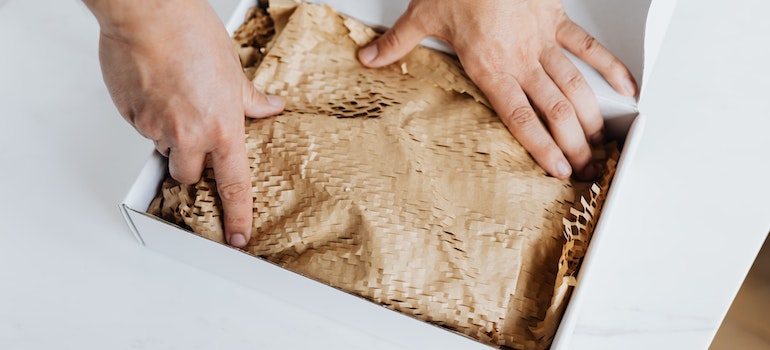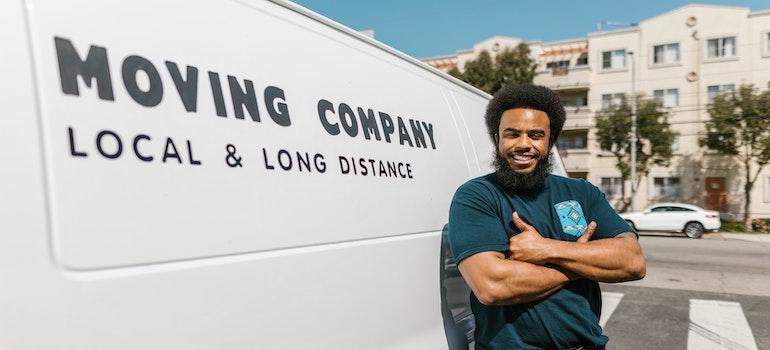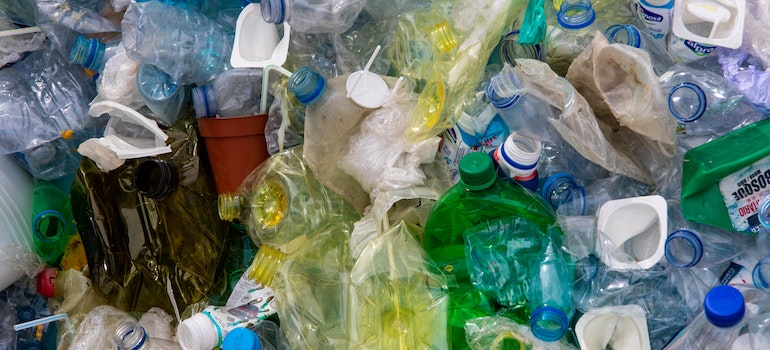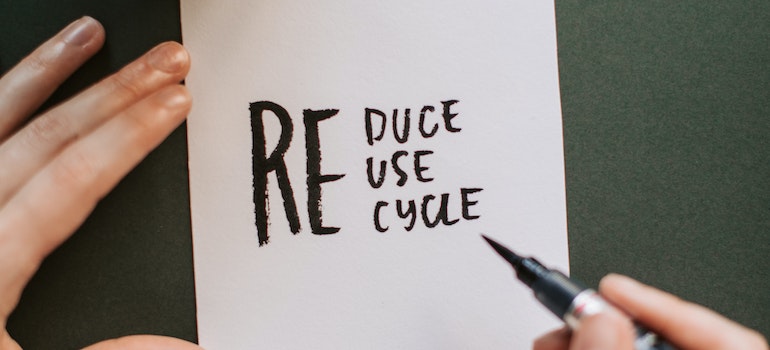Pack your way to a greener move: Sustainable packing materials
Plastic waste is a growing problem that has serious consequences for the environment. In the United States alone, an estimated 32 million tons of plastic waste was generated in 2017, with only 9% of that waste being recycled. The rest ends up in landfills or pollutes our oceans and natural habitats. As more people become aware of the impact of plastic waste on the environment, there is a growing need for sustainable packing materials that can replace traditional plastic packaging. Fortunately, there are a variety of eco-friendly alternatives to plastic packaging materials that are now available, commonly used by Seattle movers in the Washington area. In this article, we will explore these packing materials, their benefits, and potential drawbacks, and provide actionable steps for readers to pack their way to a greener move.
Eco-friendly alternatives to plastic packing materials
Sustainable packing materials are now more accessible and affordable than ever before, providing a range of options to choose from. We will explore these options in detail and highlight their benefits and potential drawbacks, providing you with the knowledge you need to make sustainable choices when packing for a move or shipment.

Biodegradable packing peanuts
Eco-friendly packing peanuts made from organic materials such as wheat or corn starch are a sustainable alternative to traditional Styrofoam packing peanuts. These peanuts are biodegradable and compostable, making them an excellent choice for individuals and businesses looking to reduce their environmental impact. Unlike Styrofoam peanuts, which take centuries to break down, these eco-friendly packing peanuts dissolve in water, leaving no harmful residues behind.
They are widely available from a variety of sources, including online retailers and local packaging supply stores. By choosing to use these sustainable packing materials, individuals and businesses can reduce their reliance on non-biodegradable materials and minimize the amount of waste they produce.
Biodegradable bubble wrap
Traditional bubble wrap is a common packing material that is made from plastic, and it can take hundreds of years to decompose in landfills. Fortunately, there is now a more sustainable alternative available: biodegradable bubble wrap. This type of bubble wrap is made from organic materials such as bamboo or recycled paper, and it is designed to break down much faster than traditional bubble wrap.
It is readily available from a variety of online retailers, making it easy for individuals and businesses to switch to more sustainable packaging materials. Instead of using materials that cannot be reused, many of the local movers Seattle moving companies hire use biodegradable bubble wrap to protect your belongings during transfer. This way you can have a sustainable move and help protect the environment for future generations.

Recycled cardboard boxes
Cardboard is a versatile and eco-friendly material that offers an excellent alternative to plastic packaging. Unlike plastic, which can take hundreds of years to break down, cardboard is biodegradable and recyclable, making it a more sustainable choice for packaging. By using recycled cardboard boxes, we can reduce the amount of waste and minimize our environmental impact.
These boxes are widely available, affordable, and can be sourced from local packaging supply stores, making them a convenient option for individuals and businesses looking to switch to more sustainable packaging materials. Furthermore, cardboard is a strong and durable material that can provide excellent protection for a wide range of products. By choosing to use cardboard boxes, we can help protect the environment while still ensuring our products arrive safely at their destination.
Mushroom packaging
Mushroom packaging, made from the roots of fungi, also known as mycelium, is an exciting and innovative alternative to traditional Styrofoam packaging. Unlike Styrofoam, which is non-biodegradable and contributes to plastic waste, mushroom packaging is biodegradable and compostable. This makes it an excellent choice for eco-conscious companies. This way they can reduce their environmental impact while still ensuring that their products are safe during shipping.
While it is still a relatively new technology and not widely available, it is gaining popularity among companies committed to sustainability. As more companies adopt this eco-friendly packaging option, it will likely become more widely available and affordable in the future, providing an even greater incentive to switch to more sustainable packaging materials.
Benefits of using sustainable packing materials
The rise of sustainable packing materials in recent years can be attributed to the growing concern over the environmental impact of plastic waste. With the realization that plastic packaging is one of the largest contributors to waste and pollution, many individuals and businesses are looking for eco-friendly alternatives.

Reducing non-biodegradable waste
Sustainable packing materials offer several benefits over traditional plastic packaging. One of the most significant benefits is reducing our reliance on non-biodegradable materials, which in turn decreases the amount of waste produced. Unlike plastic, which can take centuries to break down, these packing materials are designed to biodegrade and return to the earth naturally.
Lowering our carbon footprint
Another benefit of sustainable packing supplies is that they can help to reduce our carbon footprint. Many of these materials are from renewable resources such as bamboo, hemp, or corn starch, or from recycled materials such as paper or cardboard. This means that their production and use have a much lower environmental impact than traditional plastic packaging, which comes from fossil fuels.
Protecting the environment and wildlife
Finally, the use of sustainable packing supplies helps to protect the environment and reduce the negative impact of plastic waste on wildlife and human health. Plastic waste is a significant contributor to ocean pollution and poses a severe threat to marine life. By using green packing materials, every moving company in Washington can reduce the amount of plastic waste that ends up in our oceans and landfills, helping to safeguard our planet for future generations.
Moving and shipping companies in Seattle embrace sustainable packing supplies
As the world becomes increasingly aware of the environmental impact of plastic waste, more and more moving companies in Seattle are making the switch to sustainable packing materials. These companies are recognizing the importance of reducing their carbon footprint and minimizing their impact on the environment and are taking steps to promote sustainable practices.
Similarly, shipping companies Seattle area has are also transitioning to greener packing materials. For example, UPS has introduced eco-friendly packaging options, including compostable packing peanuts made from corn starch and biodegradable bubble wrap made from recycled materials.

By switching to sustainable packing materials, moving and shipping companies in Seattle are taking an important step toward reducing plastic waste and promoting sustainability. These efforts not only benefit the environment but also serve as an example for other companies to follow, promoting a greener future for all.
Plastic waste in the U.S.
As plastic production tripled in the span between the 1970s and the 1990s, so has the amount of plastic waste. The plastic waste generated in a decade in the early 2000s was more than the 40 years before that. Although plastic waste wasn’t a problem at the beginning of production, this information has shown dangerous tendencies for rapid growth in the future.
Around 36% of the total plastic produced is utilized in packaging. Sadly, around 85% of such packaging items end up in landfills or as unregulated waste. Moreover, nearly 98% of such single-use plastic products are made from virgin fossil fuel feedstock, leading to a considerable amount of greenhouse gas emissions. This is why people started switching to moving boxes Seattle recycling companies have no trouble with. These boxes are not only reusable but good for the environment as well. It is high time for these changes because the experts predict that the emissions associated with the production, use, and disposal of fossil fuel-based plastics will reach 19% of the world’s carbon budget by 2040.

Reduction of plastic waste in the U.S.
According to the EPA, the recycling rate for plastics in the U.S. was only 8.7% in 2018. However, the use of sustainable packing supplies has helped to reduce plastic waste in several areas. For example, Seattle implemented a ban on single-use plastic bags in 2012, which helped to reduce plastic waste in the city by an estimated 47%. Similarly, the use of biodegradable packaging materials has helped to reduce plastic waste in the shipping industry, where it is estimated that 40% of plastic waste comes from packaging materials.
Potential drawbacks of using sustainable packing materials
While there are many benefits to using eco-friendly packing materials, there are also some potential drawbacks to consider. One of the main disadvantages is the limited availability of these materials. While they are becoming more accessible, they are still not as widely available as traditional plastic packaging materials. This can make them harder to source, especially for those who live in rural areas.
Another potential drawback is the higher cost of the materials. While the cost has been decreasing in recent years, they are still more expensive than traditional plastic packaging materials. This can make them cost-prohibitive for some businesses or individuals, especially those on a tight budget.
Finally, some sustainable packaging materials may provide inferior protection compared to traditional plastic packaging materials. For example, biodegradable packing peanuts may not provide the same level of cushioning as Styrofoam peanuts, which can increase the risk of damage to fragile items during shipping.
Overcoming the limitations of sustainable packing materials
To overcome the limitations of green packing materials, there are several strategies that businesses and individuals can employ. First, they can research and identify sustainable packaging suppliers and products that meet their needs. This can include working with local packaging supply stores or online retailers that specialize in eco-friendly packaging.
Second, they can look for ways to reduce their overall packaging needs, which can help to offset the higher cost of these packing materials. This can include reducing the size of packages, minimizing the use of filler materials, and using Seattle storage methods that require less packaging.
Finally, they can work with suppliers and customers to educate them on the benefits of green packing materials and encourage them to adopt more environmentally friendly practices. This can help to create a culture of sustainability and reduce the overall demand for traditional plastic packaging materials.
Key takeaways and actionable steps
By choosing eco-friendly alternatives to plastic packaging, we can reduce our reliance on non-biodegradable materials, reduce our carbon footprint, and protect wildlife and human health. To take actionable steps towards using sustainable packing materials, businesses and individuals can:
- Research and identify sustainable packaging suppliers and products that meet their needs.
- Look for ways to reduce their overall packaging needs. For example, minimizing the use of filler materials and reducing the size of packages.
- Work with suppliers and customers to educate them on the benefits of sustainable packing supplies. Furthermore, encouraging them to adopt more environmentally friendly practices.
- Consider the potential drawbacks of eco-friendly packing materials, such as their limited availability and higher cost, and look for ways to overcome these limitations.
- Support local and national initiatives that promote sustainable packaging and reduce plastic waste.

Embracing eco-friendly moving: The importance of sustainable packing materials and a greener future
Plastic waste is a major environmental problem that has serious impacts on our planet. However, by choosing sustainable packing materials, we can reduce our reliance on non-biodegradable plastics and take steps towards a more sustainable future. There are a variety of eco-friendly alternatives to plastic packaging materials available, including biodegradable plastics, plant-based plastics, and compostable materials. It is up to each of us to take action and make a positive impact on the environment. By packing our way to a greener move and choosing sustainable packing supplies, we can contribute to a more sustainable future and protect the planet for generations to come.
Reference: https://www.unep.org/interactives/beat-plastic-pollution/
Why Choose Us
History
Hansen Bros. Moving & Storage is locally owned and operated by the same family for four generations, since 1890. We have a well-established reputation for service quality and reliability with a high percentage of repeat household and commercial clients.
Professionalism
We’re a certified ProMover by the American Moving and Storage Association with A+ rating with the Better Business Bureau, voted “Best in Western Washington” in 2009 and from 2011 to 2016 by KING5. Our company is fully licensed and insured and member of WMC and AMSA.
Value
Hansen Bros. Moving & Storage provide free, no-obligation in-home estimate and competitive rates, including low minimum rates for shipments moving under 300 miles. We’ve set a refund policy for unused packing materials and three Puget Sound locations to help clients save on travel fee costs.



